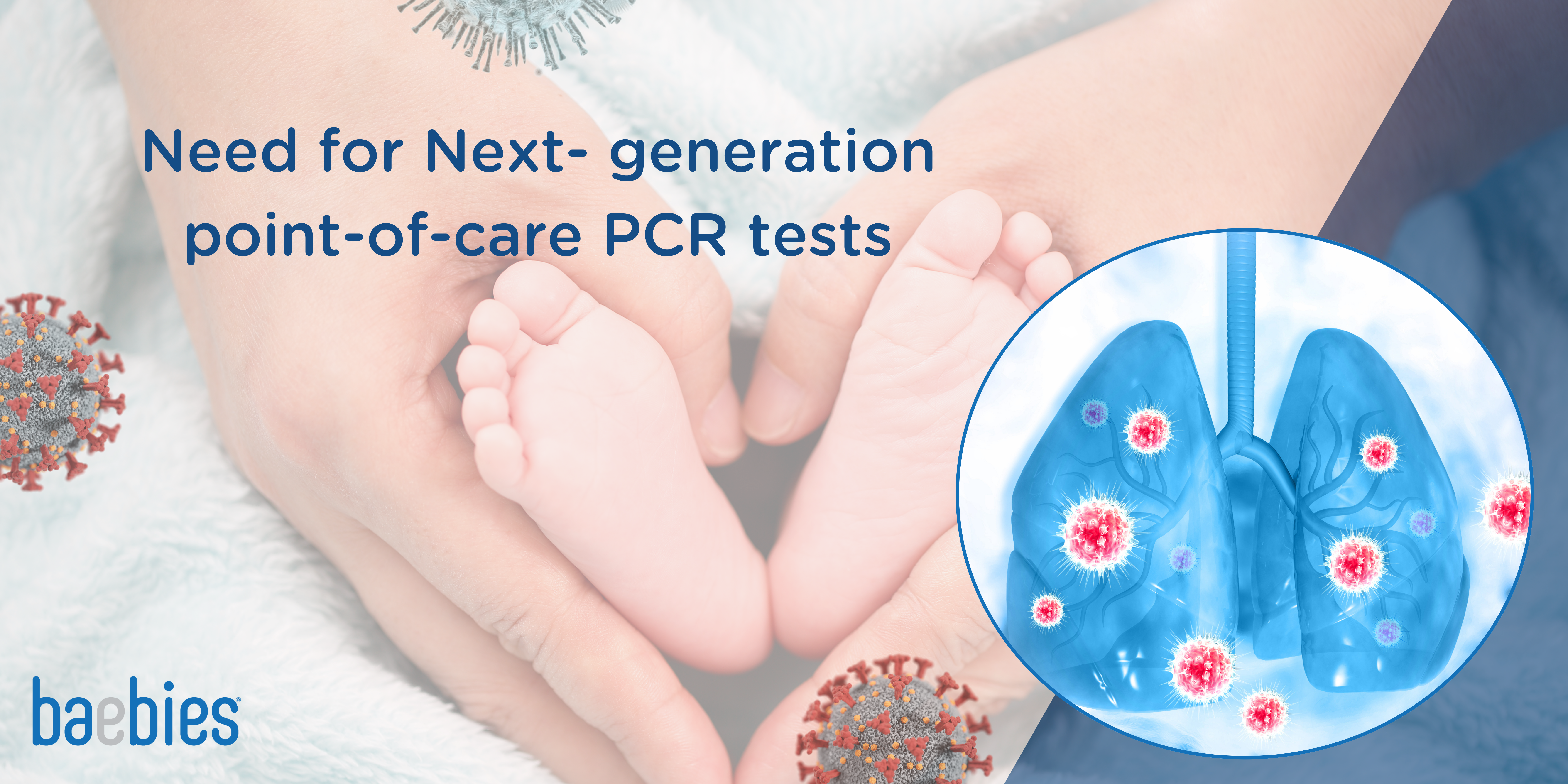Diagnostic considerations for viral respiratory illness in pediatric urgent cares
What is Pediatric Urgent Care?
The landscape of healthcare options in the United States has undergone significant expansion, further accelerated by the recent COVID-19 pandemic. One emerging model is the Pediatric Urgent Care (PUC), with roots dating back to the 1980s1 and a notable increase to approximately 1,600 sites in the U.S. as of 20172.
PUCs play a key role in bridging the gap between Primary Care settings and Emergency Departments (EDs). Central to their growth is the convenience they offer to patients and families. While primary care may have limited timing and availability, emergency rooms often entail longer waits1. Moreover, there is a substantial financial cost for parents or caregivers waiting in the waiting room, estimated at $43 for an average 2-hour visit in 2015 ($56 in 2024 dollars), surpassing the average out-of-pocket copay at that time of $323 .
Distinguishing themselves from traditional urgent care, PUCs specialize in pediatrics (<21 years of age). “Children are not small adults” is a familiar refrain to many pediatricians that has relevance in Urgent Care. Recognizing the unique needs of children, PUCs have providers with extensive pediatric training and are equipped with pediatric-specific tools4. While primary care and emergency rooms remain optimal in specific cases, particularly for newborns (<2 months old), PUCs occupy a vital niche, offering convenience and specialized care for a range of scenarios 5,6,7,8.
What role do Pediatric Urgent Cares play during surges of viral illness?
PUCs have played a key role in treating patients during outbreaks of viral illness such as H1N1 influenza, Zika, and the COVID-19 pandemic. For instance, during the 2009 H1N1 outbreak, a hospital-affiliated PUC system in Kansas City witnessed PUC volumes surpassing those of the Emergency Department9. Throughout the COVID-19 pandemic, PUCs emerged as vital hubs for care, testing, and evidence-based guidance. The first case of community spread COVID-19 was identified at a Seattle-based PUC, underscoring the PUC’s role as a critical front-line provider and public health contributor through disease surveillance10. PUCs with laboratory capabilities developed protocols for recognizing multisystem inflammatory syndrome in children (MIS-C), a rare inflammatory syndrome in children associated with SARS-CoV-211,12.
Given the stress of the COVID-19 pandemic on our healthcare system and the closing of many pediatric hospitals across the US13, healthcare facilities are compelled to achieve more with fewer resources. Effective outpatient diagnosis in settings like PUCs facilitates optimal patient management, steering clear of unnecessary ED visits and enabling higher acuity care through streamlined information sharing.
What viral respiratory illnesses may be encountered in this setting?
A whole range of viruses cause respiratory illness in children, these include rhinovirus, metapneumovirus, RSV, SAR-CoV-2, Influenza, Adenovirus, Parainfluenza, parechovirus, enterovirus, among others. During the winter of 2022-2023, we experienced a ‘Triple-demic’ of flu, SARS-CoV-2, and RSV; with a high number RSV pediatric emergency visits14. Diagnosing the specific agents responsible for respiratory illnesses is challenging due to the often-overlapping symptoms of many viral infections15. Thus, alongside a comprehensive medical history and a clinical exam; diagnostic testing is a critical tool to make accurate, timely diagnoses and optimize isolation procedures and patient management.
What types of tests are used for diagnosing respiratory illness?
For diagnosing respiratory illnesses, two commonly used types of tests are antigen tests and nucleic acid amplification tests (NAATs). During the COVID 19 pandemic, home-based antigen tests became popular which were widely distributed free-of-charge16. Antigen tests look for a protein on the virus; nucleocapsid protein (N) on SARS-CoV-2 for example17. Antigen tests are known for their speed, cost-effectiveness, and suitability for screening. However, antigen tests often miss infections (false negatives); particularly so for RSV, where sensitivity (the ability of the test to find infected individuals) can be <80%18,19. Viral loads tend to be lower early on in viral infection; for instance, SARS-CoV-2 antigen positivity may lag PCR positivity by 1-2 days20. Due to relatively lower sensitivity compared to PCR, a negative antigen test cannot rule out the possibility of infection.
On the other hand, nucleic acid amplification tests (NAATs) utilize polymerase chain reaction (PCR) or Isothermal amplification detect viral nucleic acids. PCR is considered the gold standard method for viral illness because of its very high sensitivity. Isothermal amplification tests generally fall in between PCR and antigen tests in terms of sensitivity21,22, but can have advantages of speed, cost, and ease of use. Early versions of PCR tests required specialized personnel and equipment; thus, limiting their use to hospital labs with result turnaround times of 1-2 hours. Longer turnaround time and test complexity largely prevented conventional PCR tests from being used in outpatient settings such as PUCs.
Next-generation point-of-care PCR tests
Over years of technical development and accelerated by the COVID-19 pandemic, PCR testing has transitioned from specialized hospital labs to near patient settings; with point-of-care (POC) PCR tests reaching some clinics. POC PCR tests seamlessly blend the gold standard accuracy of PCR with significantly enhanced speed and ease of use. The latest PCR test panels are designed to detect multiple pathogens from a single patient sample; helping to address the inherent difficulty of respiratory diagnosis due to overlapping symptoms. By rapidly testing for multiple pathogens with high accuracy, next-generation PCR tests promise better patient care, infection control, and patient management. The rapid delivery of accurate results enables clinicians to promptly administer tailored treatment to the appropriate patient, such as initiating antiviral medications when necessary and preventing unnecessary antibiotic overuse. While research is in an early phase, given the recent development of rapid POC PCR tests, some studies have hinted at possible benefits. For instance, one study found improved antiviral prescriptions with POC PCR in an urgent care setting23. Ideally, with improved diagnostic tools, parents and children have fewer return visits, more peace of mind with a confirmed diagnosis, and an expedited journey toward recovery.
References:
-
- Mason, Philip J. “New insights into G6PD deficiency.” British journal of haematology 94.4 (1996): 585-591
- Vidavalur, Ramesh, and Vinod K. Bhutani. “Estimates of Racial Diversity of National (USA) glucose-6-phosphate Dehydrogenase Deficiency (G6PDd) Prevalence Among Newborns.” Pediatrics 149.1 Meeting Abstracts February 2022 (2022): 670-670
- https://medlineplus.gov/genetics/condition/glucose-6-phosphate-dehydrogenase-deficiency/
- Van den Heuvel, E. A. L., et al. “A rare disorder or not? How a child with jaundice changed a nationwide regimen in the Netherlands.” Journal of Community Genetics 8.4 (2017): 335
- Kristensen, Line, et al. “A greater awareness of children with glucose‐6‐phosphate dehydrogenase deficiency is imperative in western countries.” Acta Paediatrica 110.6 (2021): 1935-1941
- Kaplan, Michael, et al. “Neonatal hyperbilirubinemia in African American males: the importance of glucose-6-phosphate dehydrogenase deficiency.” The Journal of pediatrics 149.1 (2006): 83-88
- Leung-Pineda, Van, Elizabeth P. Weinzierl, and Beverly B. Rogers. “Preliminary Investigation into the Prevalence of G6PD Deficiency in a Pediatric African American Population Using a Near-Patient Diagnostic Platform.” Diagnostics 13.24 (2023): 3647
- Nkhoma, Ella T., et al. “The global prevalence of glucose-6-phosphate dehydrogenase deficiency: a systematic review and meta-analysis.” Blood Cells, Molecules, and Diseases 42.3 (2009): 267-278
- Chinevere, Troy D., et al. “Prevalence of glucose-6-phosphate dehydrogenase deficiency in US Army personnel.” Military medicine 171.9 (2006): 905-907
- https://www.census.gov/quickfacts/
- https://baebies.com/jessicas-story-a-remarkable-fight-for-answers-with-g6pd-deficiency/
- Luzzatto, Lucio, and Paolo Arese. “Favism and glucose-6-phosphate dehydrogenase deficiency.” New England Journal of Medicine 378.1 (2018): 60-71
- Begum, Afsana. “Naphthalene Poisoning in a Young Glucose 6 Phosphate Dehydrogenase Deficient Patient.” Bangladesh Journal of Medicine (2023): 218-218
- Carson, Paul E., et al. “Enzymatic deficiency in primaquine-sensitive erythrocytes.” Science 124.3220 (1956): 484-485
- https://www.g6pd.org/en/G6PDDeficiency/SafeUnsafe/drugs-official-list
- https://nctr-crs.fda.gov/fdalabel/ui/search
- https://www.who.int/publications/i/item/9789241514286
- Chisholm-Burns MA, Patanwala AE, Spivey CA. Aseptic meningitis, hemolytic anemia, hepatitis, and orthostatic hypotension in a patient treated with trimethoprim-sulfamethoxazole. Am J Health Syst Pharm. 2010 Jan 15;67(2):123-7. doi: 10.2146/ajhp080558. PMID: 20065266
- Reinke CM, Thomas JK, Graves AH. Apparent hemolysis in an AIDS patient receiving trimethoprim/sulfamethoxazole: case report and literature review. J Pharm Technol. 1995 Nov-Dec;11(6):256-62; quiz 293-5. doi: 10.1177/875512259501100607. PMID: 10157546.
- Lu, Y. W., and T. C. Chen. “Use of Trimethoprim-Sulfamethoxazole in Patient with G6PD Deficiency for Treating Pneumocystis Jirovecii Pneumonia.” Clin Case Rep Int. 2019; 3 1119
- https://clincalc.com/DrugStats/Drugs/SulfamethoxazoleTrimethoprim
- Recht, Judith, et al. “Nitrofurantoin and glucose-6-phosphate dehydrogenase deficiency: a safety review.” JAC-Antimicrobial Resistance 4.3 (2022): dlac045
- https://clincalc.com/DrugStats/Drugs/Nitrofurantoin
- https://clincalc.com/DrugStats/Drugs/Dapsone
- Pamba, Allan, et al. “Clinical spectrum and severity of hemolytic anemia in glucose 6-phosphate dehydrogenase–deficient children receiving dapsone.” Blood, The Journal of the American Society of Hematology 120.20 (2012): 4123-4133
- Youngster, Ilan, et al. “Medications and glucose-6-phosphate dehydrogenase deficiency: an evidence-based review.” Drug safety 33 (2010): 713-726
- Hammami, M. Bakri, et al. “Rasburicase-induced hemolytic anemia and methemoglobinemia: A systematic review of current reports.” Annals of Hematology (2023): 1-13
- Jack Clifton, I. I., and Jerrold B. Leikin. “Methylene blue.” American journal of therapeutics 10.4 (2003): 289-291
- Lucey, Jerold F., and Robert G. Dolan. “Hyperbilirubinemia of newborn infants associated with the parenteral administration of a vitamin K analogue to the mothers.” Pediatrics 23.3 (1959): 553-560
- Kaplan, Michael, et al. “Effect of vitamin K1 on glucose-6-phosphate dehydrogenase deficient neonatal erythrocytes in vitro.” Archives of disease in childhood. Fetal and neonatal edition 79.3 (1998): F218
- Foltz, Lynda M., et al. “Recognition and management of methemoglobinemia and hemolysis in a G6PD‐deficient patient on experimental anticancer drug Triapine.” American journal of hematology 81.3 (2006): 210-211
- Corchia C, Balata A, Meloni GF, Meloni T. Favism in a female newborn infant whose mother ingested fava beans before delivery. J Pediatr 1995; 127:807-8
*All reference websites were accessed as of date 1.26.2024

